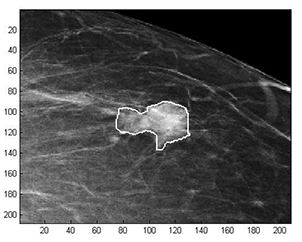Latest News Archive
Please select Category, Year, and then Month to display items
17 October 2024
|
Story Precious Shamase
|
Photo Supplied
 Sibahle Mabaso during her BA (Hons) Drama and Theatre Arts (2022) graduation, which she passed cum laude.
Sibahle Mabaso during her BA (Hons) Drama and Theatre Arts (2022) graduation, which she passed cum laude.
Sibahle Mabaso, a talented and driven individual, has been making waves at the University of the Free State (UFS). As a runner-up in the prestigious Siyaphumelela ATD DREAM Scholar programme, Mabaso's dedication and achievements have not gone unnoticed.
A multi-faceted student, Mabaso excelled in both her academic pursuits and extracurricular activities. A graduate of the UFS Drama and Theatre Arts programme, Mabaso's academic pursuits have been as diverse as her interests. She has a BA in Drama and Theatre Arts (2019-2021), a BA Honours in Drama and Theatre Arts (2022), and she is currently pursuing a Master of Arts with specialisation in Gender Studies. Her passion for the arts is evident in her work as a playwright, director, and educator. Mabaso is currently an Assistant Researcher in Transition, Development and Success within the Centre for Teaching and Learning.
Mabaso's journey to academic success has been marked by resilience and perseverance. Despite facing challenges, she has overcome obstacles through hard work, determination, and the support of mentors.
Beyond her academic achievements, Mabaso is committed to giving back to her community. She recently founded a creative enterprise called Wild Geese PTY LTD, which aims to provide opportunities for young creatives. Through her work, Mabaso hopes to inspire and mentor others, sharing her experiences and knowledge to help them reach their full potential.
As Mabaso continues her academic journey and pursues her career goals, her dedication and passion for both her studies and community engagement are sure to inspire others. Her achievements serve as a testament to the power of hard work, resilience, and a commitment to making a positive impact. Looking ahead, Mabaso hopes to continue her academic pursuits and pursue a career in higher education. She is also passionate about giving back to her community and mentoring young people. With her talent, dedication, and unwavering spirit, there is no doubt that Sibahle Mabaso will continue to achieve great things.
Mathematical methods used to detect and classify breast cancer masses
2016-08-10
 Examples of Acho’s breast mass
Examples of Acho’s breast mass
segmentation identification
Breast cancer is the leading cause of female mortality in developing countries. According to the World Health Organization (WHO), the low survival rates in developing countries are mainly due to the lack of early detection and adequate diagnosis programs.
Seeing the picture more clearly
Susan Acho from the University of the Free State’s Department of Medical Physics, breast cancer research focuses on using mathematical methods to delineate and classify breast masses. Advancements in medical research have led to remarkable progress in breast cancer detection, however, according to Acho, the methods of diagnosis currently available commercially, lack a detailed finesse in accurately identifying the boundaries of breast mass lesions.
Inspiration drawn from pioneer
Drawing inspiration from the Mammography Computer Aided Diagnosis Development and Implementation (CAADI) project, which was the brainchild Prof William Rae, Head of the department of Medical Physics, Acho’s MMedSc thesis titled ‘Segmentation and Quantitative Characterisation of Breast Masses Imaged using Digital Mammography’ investigates classical segmentation algorithms, texture features and classification of breast masses in mammography. It is a rare research topic in South Africa.
Characterisation of breast masses, involves delineating and analysing the breast mass region on a mammogram in order to determine its shape, margin and texture composition. Computer-aided diagnosis (CAD) program detects the outline of the mass lesion, and uses this information together with its texture features to determine the clinical traits of the mass. CAD programs mark suspicious areas for second look or areas on a mammogram that the radiologist might have overlooked. It can act as an independent double reader of a mammogram in institutions where there is a shortage of trained mammogram readers.
Light at the end of the tunnel
Breast cancer is one of the most common malignancies among females in South Africa. “The challenge is being able to apply these mathematical methods in the medical field to help find solutions to specific medical problems, and that’s what I hope my research will do,” she says.
By using mathematics, physics and digital imaging to understand breast masses on mammograms, her research bridges the gap between these fields to provide algorithms which are applicable in medical image interpretation.